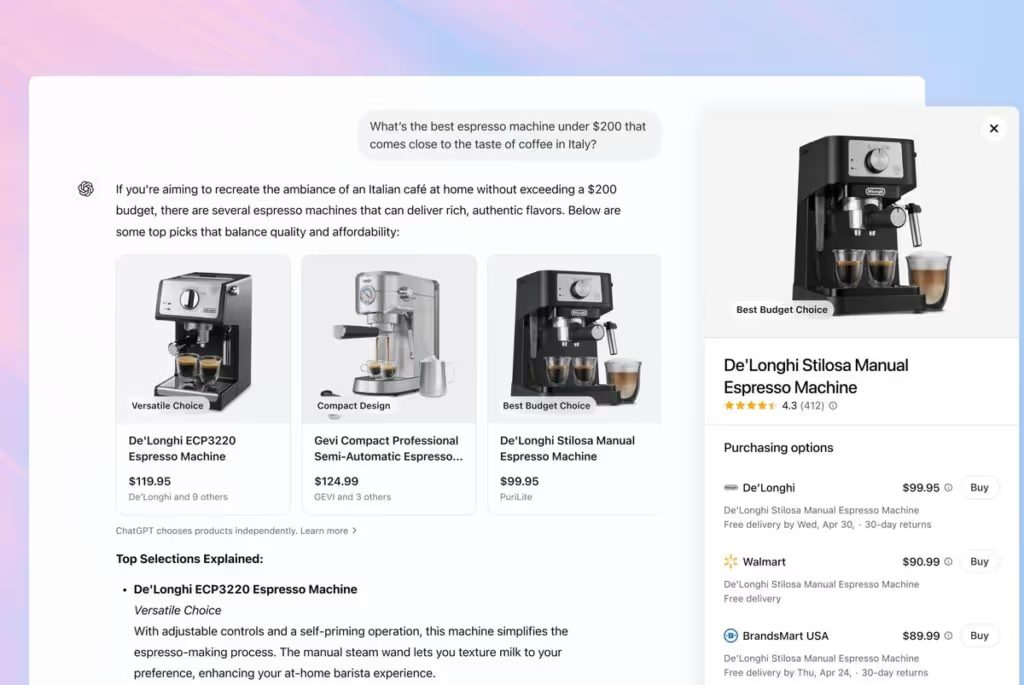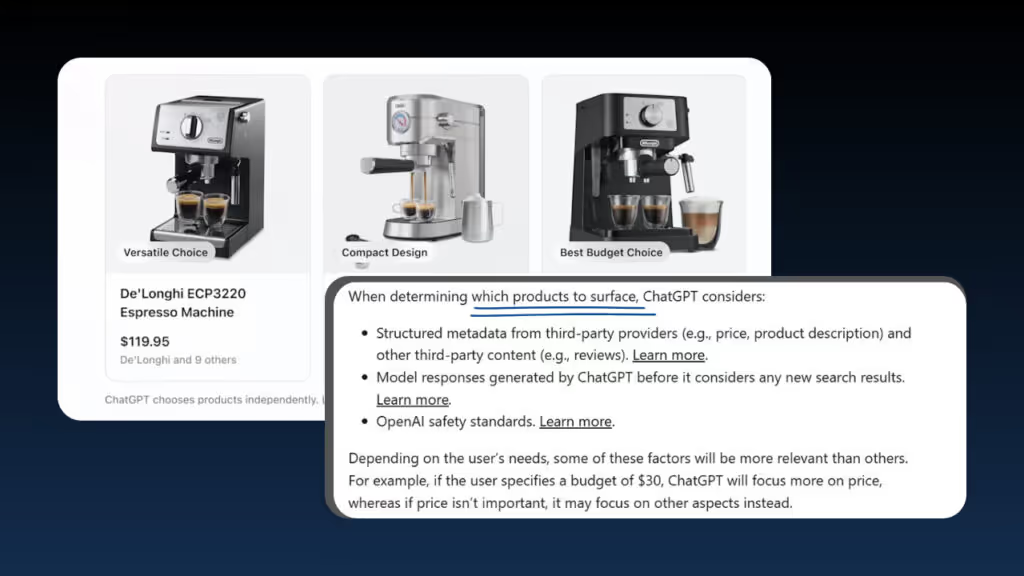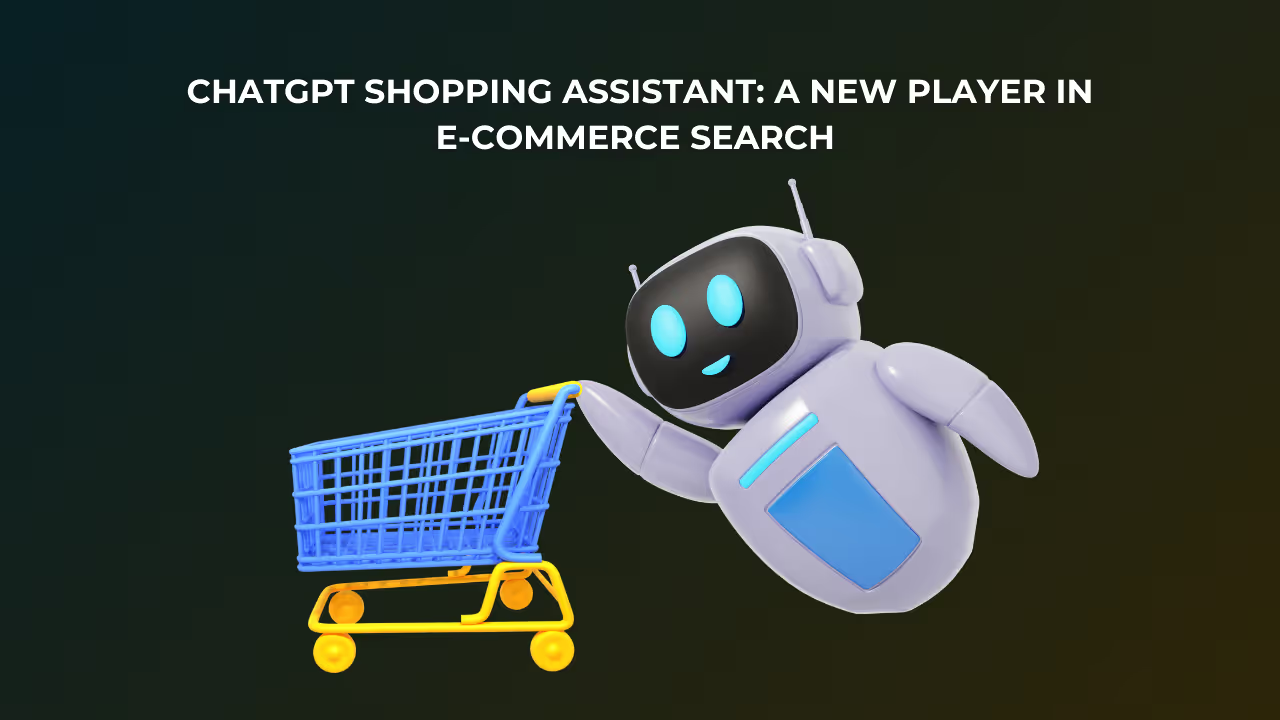Online shopping is changing (again!). This time, not because of a new app, marketplace, or social trend, but because of how people search. If you've been watching closely, you'll know that OpenAI recently added a ChatGPT shopping assistant, and while it's still early days, it's already raising big questions for marketers.
This isn't just another chatbot integration. It's a sign that search behavior is shifting from keywords and ads toward conversational, AI-driven product discovery.
Let's unpack what this means for marketers and brands trying to stay relevant in a constantly evolving digital landscape.
What Is the ChatGPT Shopping Assistant?
The new ChatGPT shopping assistant allows users to search for products using natural language. Instead of typing “best budget noise-cancelling headphones”, a user might simply ask, “What are the best noise-cancelling headphones under $150?” and get a carousel of product results, with images, prices, descriptions, reviews, and links to buy.
The feature is already available to all users, even without an account, and covers categories like fashion, electronics, home goods, and beauty. It doesn't offer direct checkout (at least not yet), but it's designed to reduce friction in the shopping journey by putting recommendations directly into the chat.
There are no paid placements at this stage. Products are selected based on intent, product data, and user preferences (for Plus and Pro users with memory enabled).

ChatGPT Shopping vs Google Shopping vs Perplexity AI: What's Different?
ChatGPT shopping isn't the first AI tool to help users shop. But its integration into an existing conversational AI that already has over a billion weekly queries makes it worth examining.
Here's how it compares:
Key Takeaways for Marketers
- Personalization is evolving: Google uses historical data for personalization. ChatGPT uses stored conversations (for subscribed users), which could lead to more context-aware suggestions over time.
- No ads = no shortcuts: With no paid placements, you can't buy visibility (for now). That shifts the focus to content quality, product metadata, and reputation.
- No visual search (yet): Unlike Google and Perplexity, ChatGPT doesn't support image-based queries. If your product relies on visual appeal, this may limit discovery for now.
- Checkout isn't native: Users still need to go to the retailer's site to complete the purchase, which means there's no “one-click” frictionless experience like on some platforms.
What This Means for E-commerce Strategy
From a practical marketing standpoint, the emergence of ChatGPT's shopping assistant pushes us to rethink a few things:
1. Traditional SEO Won't Be Enough
You've probably optimized your PDPs and structured data for Google. That still matters, but AI tools like ChatGPT don't crawl pages in the same way. They extract meaning, synthesize reviews, and summarize benefits.
This is where LLMO (Large Language Model Optimization) comes in. It's about:
- Structuring product feeds clearly (titles, specs, availability)
- Including user-centric language and FAQs
- Maintaining consistent review quality and product sentiment
2. Brand Recognition Could Matter Less
LLMs don't care if your brand is well-known, they're designed to suggest what's relevant, well-reviewed, and clearly described. If you're relying solely on brand authority, you might lose visibility to more optimized competitors.
3. Conversion Paths Are Changing
ChatGPT shopping doesn't offer native checkout (yet), but it does act as a top-of-funnel filter. Users may now start their research here instead of Google or Amazon. If you're not showing up in these early conversations, you're already out of the race.
Will This Impact Affiliate and Content Marketing?
Quite possibly.
If consumers find what they need directly inside ChatGPT, especially with unbiased recommendations, affiliate publishers might lose traffic. Similarly, blogs that rely on high-ranking Google SEO content might see less engagement if users bypass search engines entirely.
This doesn't mean content marketing is dead. It just means content needs to be:
- Structured for AI interpretation (clear, concise, factual)
- Designed to answer questions, not just rank keywords
- Focused on building trust and clarity, not salesy language
So, What Should Marketers Do Now?
Here's a short list of actions that make sense now, even if you're not ready to overhaul your e-commerce strategy.

Optimize product data for AI:
- Use descriptive titles and bullet points.
- Keep data consistent across platforms.
- Highlight user reviews and key specs.
Test your visibility:
- Try product prompts in ChatGPT.
- See if your brand or competitors are being mentioned.
- Adjust listings or messaging based on what the AI recommends.
If you're running multi-platform campaigns, tools like Dataslayer can help automate the reporting process, letting you monitor performance across Google Shopping, Meta Ads, and other key sources, so you can focus on optimizing what actually moves the needle.
Don't ditch SEO—evolve it:
- Keep optimizing for Google, but start experimenting with LLM-friendly content.
- Update blog posts and product pages to better answer real user questions.
Final Thoughts
The launch of the ChatGPT shopping assistant isn't about replacing Google or dominating e-commerce overnight. But it does suggest where user behavior is heading: toward more intuitive, personalized, and less ad-driven shopping experiences.
As marketers, we do need to pay attention. We've seen this before: when mobile changed UX, when influencer marketing reshaped trust and purchasing decisions, and when TikTok changed product discovery. This is another shift, and those who adapt early will be better positioned to meet customers where they're actually shopping, not just where they used to.







